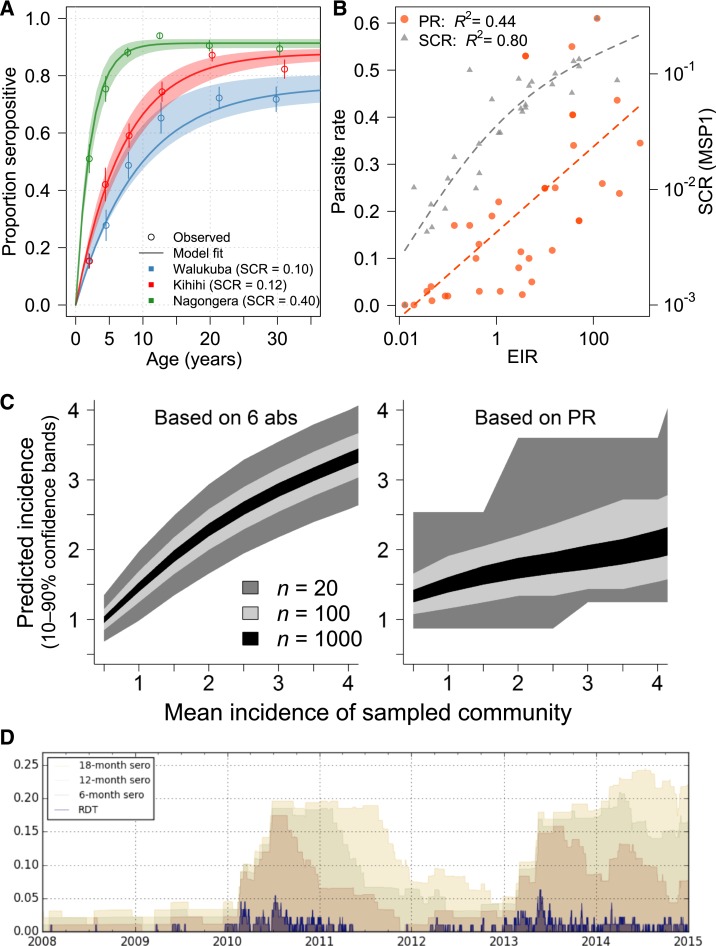Figure 1.
Established and next-generation methods for evaluating malaria transmission via antibodies provide higher resolution than parasite prevalence. (A) The seroconversion rate (SCR) for a population can be calculated from age-stratified prevalence of antibody responses, often with a long half-life. Data shown here are responses to apical membrane antigen 1 from three cross-sectional surveys in Uganda.34 (B) Paired SCR and parasite rate (PR) data from multiple sites10,34–43 demonstrate that SCR (using merozoite surface protein 1, MSP-1) has a tighter association with transmission, as measured by the annual entomologic inoculation rate (EIR). (C) Using six antibodies identified as informative about recent exposure, predictions of P. falciparum exposure in a community can be obtained from relatively small surveys, in contrast to PR data obtained from the same surveys.19 (D) A simulation of a small village (N = 100) with seasonal, low transmission illustrates how ongoing transmission can be detected consistently from an antibody test measuring recent exposure, but less reliably from rapid diagnostic test (RDT).44 This figure appears in color at www.ajtmh.org.

